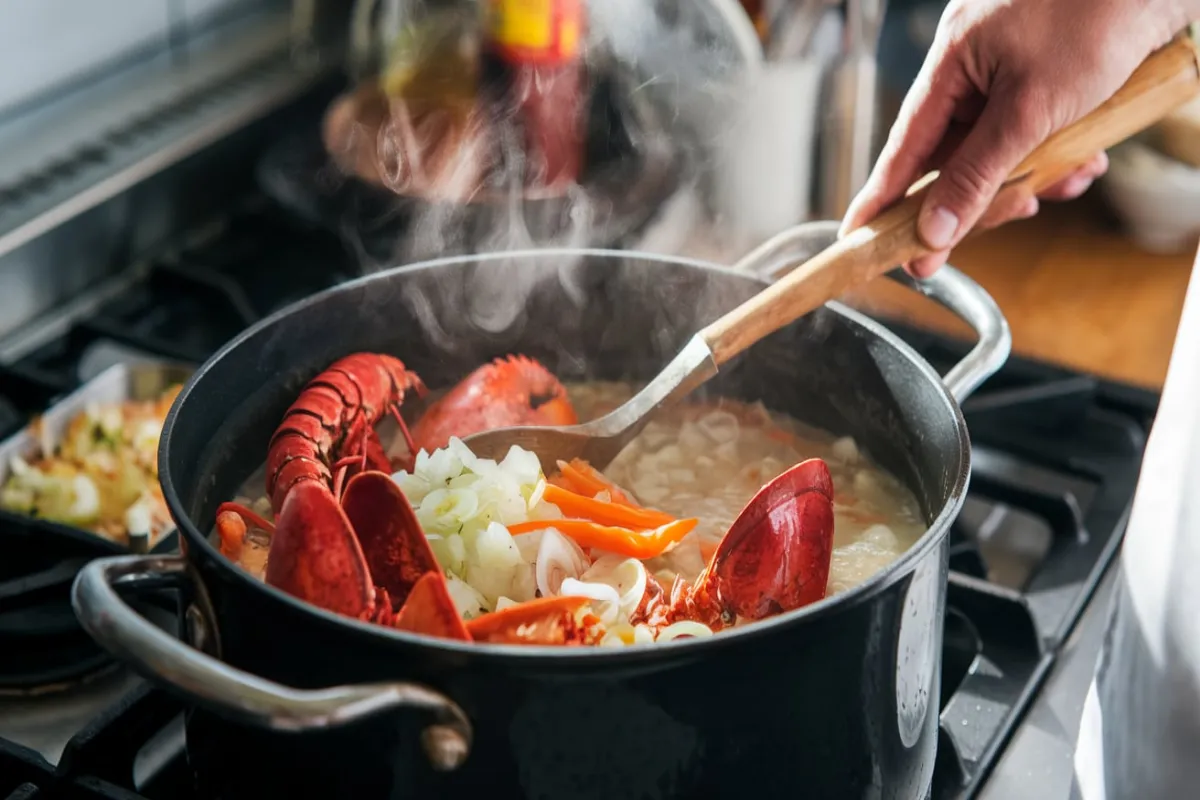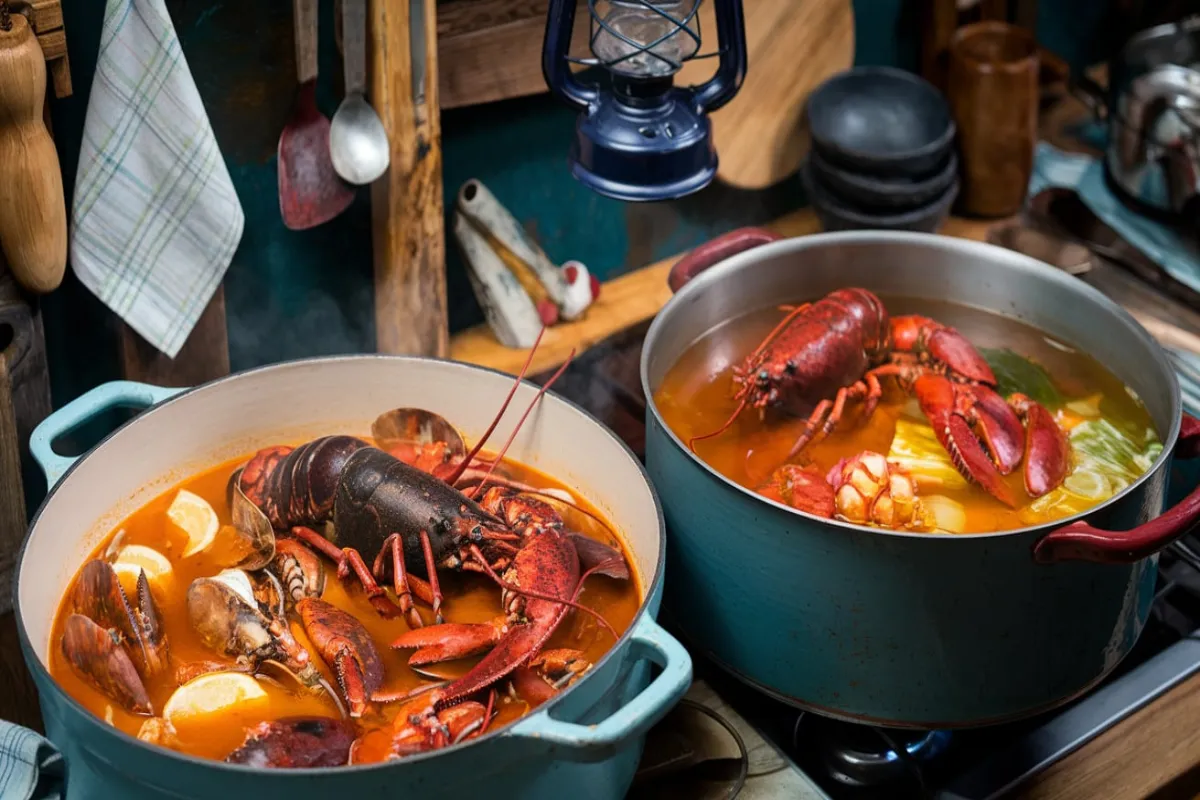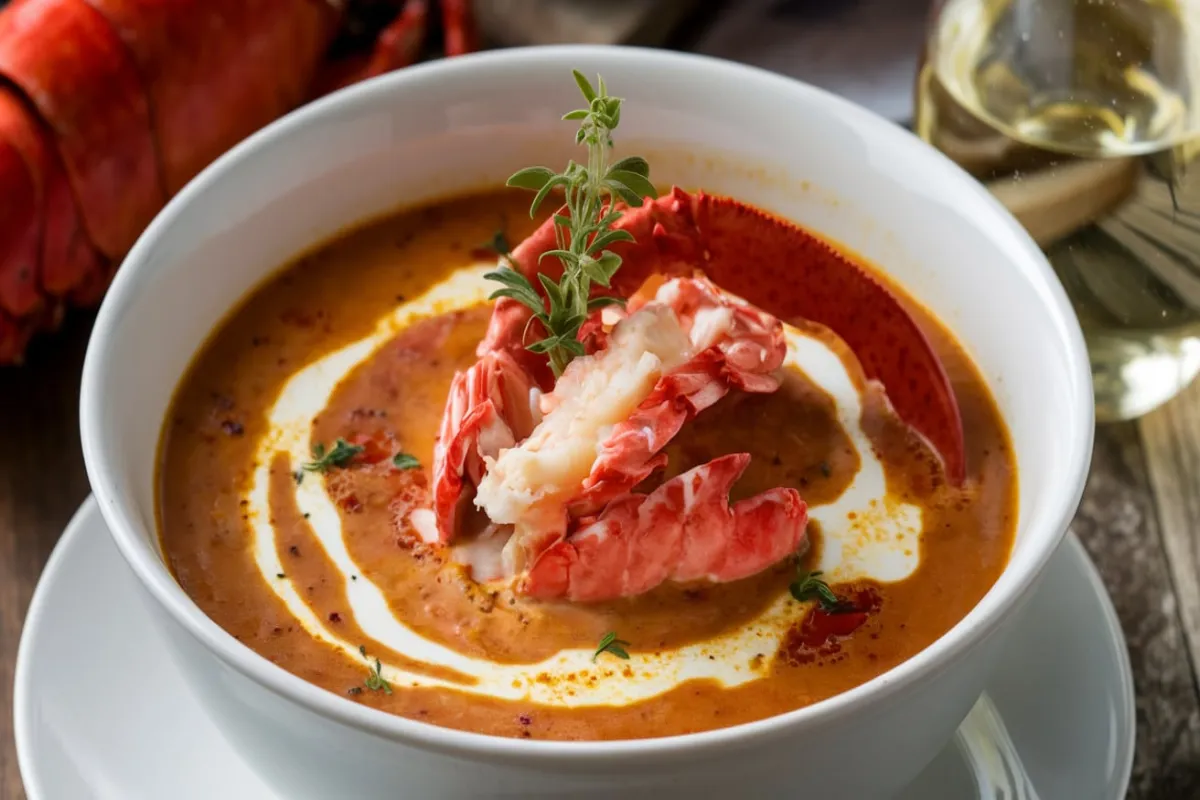Introduction
Bisque is a term that evokes images of luxurious, velvety soups often found on the menus of fine dining restaurants. While many people have enjoyed a bowl of bisque, few may know what exactly makes a bisque, a bisque. This classic French dish, known for its rich flavors and smooth texture, has a long history and specific characteristics that set it apart from other soups. In this article, we will explore the origins, defining features, and traditional preparation methods that make a bisque truly a bisque.
The Origins of Bisque
1. French Culinary Roots
The word “bisque” is believed to have originated from the Bay of Biscay, a region off the west coast of France, though some culinary historians argue that it comes from the French phrase “bis cuites,” which means “twice cooked.” This reference to cooking the main ingredients twice is a key aspect of traditional bisque preparation, where the shells of crustaceans like lobster, crab, or shrimp are sautéed and then simmered to create a deeply flavorful stock.
Bisque began as a rustic dish made by fishermen who used the less marketable parts of shellfish, such as the shells and small, imperfectly formed crustaceans, to create a hearty and rich soup. Over time, this humble dish evolved into a symbol of luxury and indulgence, especially as it became popular in fine dining establishments.
2. Evolution into a Luxurious Dish
As bisque gained popularity, it moved from the fishing villages of France to the elegant dining rooms of the aristocracy. Chefs began to refine the dish, focusing on creating a smooth, creamy texture and intensifying the flavors. The introduction of cream, brandy, and other rich ingredients elevated bisque from a simple fisherman’s meal to a sophisticated culinary experience.

Key Characteristics of a Traditional Bisque
To understand what makes a traditional bisque unique, it’s important to explore its defining features.
1. Use of Shellfish
One of the primary characteristics of a traditional bisque is the use of shellfish. While modern variations might use other ingredients like vegetables or even fruits, the classic bisque is made with crustaceans such as lobster, shrimp, crab, or crayfish. The flavor of the bisque comes largely from the shells of these crustaceans, which are roasted or sautéed to release their natural flavors before being simmered in liquid to create a rich stock.
2. Twice-Cooked Method
The twice-cooked method is a hallmark of traditional bisque preparation. First, the shells are sautéed to draw out their flavors, often with aromatic vegetables like onions, carrots, and celery. This process not only enhances the taste but also adds depth to the soup. After sautéing, the shells are simmered in a broth or stock to extract every bit of flavor. This liquid is then strained to remove the solids, leaving a concentrated and flavorful base for the bisque.
3. Thickened with Rice or Roux
Traditional bisque is known for its thick, creamy texture. Originally, this texture was achieved by incorporating cooked rice into the soup, which was then pureed along with the rest of the ingredients. The rice acted as a natural thickener, giving the bisque its signature smoothness without the need for flour or other thickening agents. In some recipes, a roux—a mixture of butter and flour—is used to achieve a similar consistency.
4. Creamy and Velvety Texture
The addition of cream is what gives bisque its luxurious, velvety texture. After the base is strained and thickened, cream is added to create a smooth, rich consistency that coats the palate. This is one of the key differences between bisque and other types of soups, such as chowders, which are often chunky and less refined in texture.
5. Intense Flavor
The process of simmering the sautéed shells in broth extracts every bit of flavor from the crustaceans, resulting in a bisque that is intensely flavorful. The concentrated seafood essence is complemented by the richness of the cream, creating a balanced, deeply savory dish. Some bisques also incorporate brandy, cognac, or sherry to add complexity and a slight hint of sweetness.

Traditional Preparation of Bisque
Making a traditional bisque involves several steps that require attention to detail and patience. Here’s a closer look at how this classic dish is traditionally prepared:
1. Sautéing the Shells
The first step in making a bisque is to sauté the shells of the crustaceans. This is typically done in butter, which adds richness to the final dish. The shells are cooked over medium heat until they turn a deep red and begin to release their flavors. Aromatic vegetables like onions, carrots, and celery are often added at this stage, contributing additional layers of flavor.
2. Simmering to Create the Stock
After the shells have been sautéed, liquid is added to the pot to begin the simmering process. This liquid is usually a combination of broth, water, and sometimes wine or brandy. The mixture is brought to a boil and then reduced to a simmer, allowing the shells to infuse the liquid with their flavor. This process can take anywhere from 30 minutes to an hour, depending on the recipe.
3. Straining the Stock
Once the stock has been simmered to extract the maximum amount of flavor, it is carefully strained to remove the shells and vegetables. What remains is a rich, flavorful liquid that serves as the base for the bisque. Some chefs prefer to press the shells against the strainer to extract every last drop of liquid, ensuring that nothing goes to waste.
4. Thickening the Bisque
The next step is to thicken the bisque. Traditionally, this was done by adding cooked rice to the stock and then pureeing the mixture until smooth. In modern recipes, a roux made from butter and flour might be used instead, or a combination of both methods. The goal is to achieve a thick, velvety texture that is characteristic of bisque.
5. Adding the Cream
After thickening, the bisque is finished with cream, which is gently stirred in to create a smooth, rich consistency. The amount of cream can be adjusted to taste, but it is essential to the final texture and flavor of the bisque. At this stage, the bisque might also be seasoned with additional salt, pepper, or spices, depending on the desired flavor profile.
6. Final Touches and Serving
Finally, the bisque is often finished with a splash of brandy, cognac, or sherry, adding a touch of elegance and complexity to the dish. It is typically served in small, shallow bowls, garnished with a drizzle of cream, a sprig of fresh herbs, or a few pieces of lobster or shrimp for an elegant presentation.
Variations of Bisque
While traditional bisque is made with shellfish, there are many variations of this dish that have emerged over time. Here are a few popular alternatives:
1. Tomato Bisque
Tomato bisque is a popular variation that substitutes tomatoes for shellfish. It follows a similar preparation method, with the tomatoes being sautéed and then simmered before being pureed and thickened with cream. The result is a rich, velvety soup with a deep tomato flavor.
2. Crab Bisque
Crab bisque is another seafood variation, made using the same principles as lobster bisque but with crab as the primary ingredient. The use of crab shells to create the stock results in a slightly different flavor profile, but the soup retains the same creamy, luxurious texture.
3. Vegetable Bisque
For those who prefer a vegetarian option, vegetable bisque is a delicious alternative. This variation uses a variety of vegetables, such as butternut squash, carrots, or mushrooms, which are roasted or sautéed before being simmered and pureed. Although it lacks the seafood flavor of traditional bisque, it still offers a rich and satisfying soup experience.
Common Misconceptions About Bisque
Given its complexity, bisque is often misunderstood. Here are some common misconceptions:
1. Bisque Must Always Contain Shellfish
While traditional bisque is made with shellfish, modern variations have expanded the definition to include other ingredients like tomatoes and vegetables. What remains consistent is the smooth, creamy texture and the rich, concentrated flavors.
2. Bisque is Just a Fancy Term for Soup
Bisque is indeed a type of soup, but not all soups are bisques. The techniques used to create bisque—such as the twice-cooked method and the incorporation of cream—are what distinguish it from other soups. Bisque is more refined, with a focus on achieving a silky, velvety texture.
3. Bisque is Difficult to Make at Home
While bisque does require attention to detail, it is not beyond the reach of the home cook. With patience and the right ingredients, anyone can create a delicious bisque in their own kitchen. The key is to take your time with each step, especially when sautéing the shells and simmering the stock.
When to Serve Bisque
Bisque is often reserved for special occasions due to its richness and luxurious nature. It’s a perfect starter for a holiday meal, an elegant dinner party, or a romantic dinner for two. Because it is so rich, bisque is typically served in small portions, making it a fitting appetizer before a lighter main course.
Conclusion
A traditional bisque is more than just a soup; it’s a culinary experience that highlights the rich flavors of shellfish, combined with a smooth, velvety texture that makes it truly unique. The key characteristics of a bisque—its use of shellfish, the twice-cooked method, the thick, creamy texture, and the intense flavor—are what set it apart from other soups. Understanding these elements allows you to appreciate the complexity and elegance of this classic dish, whether you’re enjoying it at a fine dining restaurant or making it at home.

